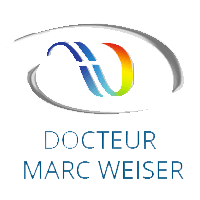1/ Definition
The human eye is a sensorial organ essential to the perception of the world around us, through the constant acquisition of new information, which our brain receives from our environment. More than 80 % of the sensory information received by our brain travels through the visual pathway.
In order to obtain a clear vision, the cornea and crystalline lens must focus the light on the retina located at the back of the eye. If the light is not focused properly on the retina, the image that the brain receives will not be clear. This is what is called a refractive error. Eyeglasses, contact lenses and surgery help focus light as close as possible to the retina, thereby obtaining a clear vision.
The cornea, the iris and the crystalline lens are the three major components that allow us to focus the light rays on the retina, thereby providing a clear view.
The cornea
The cornea is made of different successive layers, each playing a role in the transparency of the cornea and in the quality of vision.
The corneal epithelium is the outer layer of the cornea, and plays an essential role in the healing of corneal surface and in maintaining its regularity.The epithelium can locally adapt its thickness to fill any irregularities in the underlying cornea.
The Bowman’s membrane is a thin membrane on which is based the epithelium, separating it from the corneal stroma.
The corneal stroma thickness varies according to each individual, reaching 400 to 600 microns. When the laser erases the stroma, the latter does not regenerate itself, contrary to the epithelium. Therefore, it is this layer that is thinned down and remodeled by a laser during surgery to obtain the desired refractive effect.
The corneal endothelium is the innermost layer of the cornea, which comes into contact with the aqueous humor. It serves to maintain the transparency of the cornea and as such is not directly affected by the various surgical procedures used in refractive surgery.
Refractive laser surgery alters the shape and thickness of the cornea. Hence, by slightly flattening or bulging the corneal front surface, it is possible to correct an important visual haze by refocusing the light rays on the retina.
3/ Iris
The iris reacts to light by changing the pupil size, enabling the eye to adapt to changes to the intensity of light.
4/ The crystalline lens
This biconvex lens is located behind the iris and is the eye’s second major ocular diopter. During the transition from distant to near vision, for example during reading or engaging in other activity requiring a near vision, crystalline lens will deform itself owing to the action of the ciliary body, a circumferential muscle tissue to which it is connected by an infinity of small fibrils, which form a sort of hammock. These tiny fibers called “zonule” surround the equator of the lens in a 360-degree fashion.
Due to its elasticity, the crystalline lens thus deforms itself and increases its refractive power. This allows us to automatically refocus the images on the retina without feeling it, in order to get a clear near vision.
